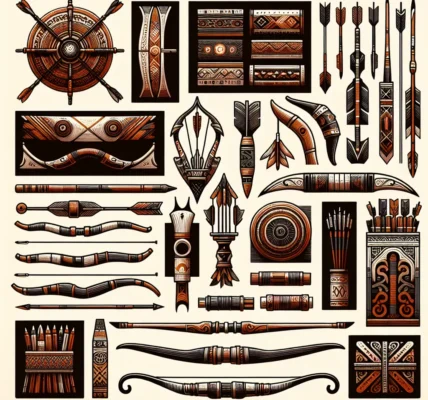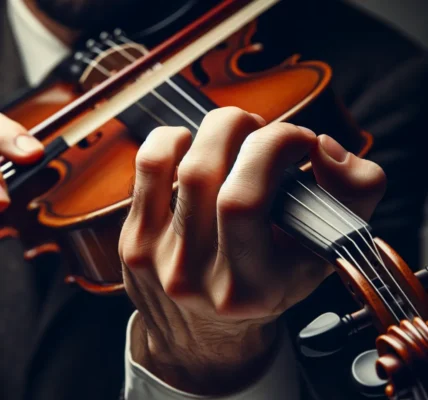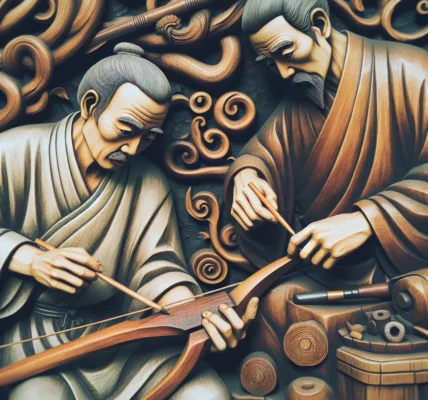History of Bow Making
Bow making is an ancient craft with a rich history that spans across cultures and traditions. The art of bow making has been a fundamental aspect of many civilizations, playing a crucial role in warfare, hunting, and ceremonial practices. The origins of bow making can be traced back to prehistoric times, with evidence of early bow construction found in various archaeological sites around the world.
The techniques and traditions of bow making have evolved over centuries, influenced by the materials available in different regions, as well as the specific needs of the people using the bows. For example, the longbow, famously used by the English in the Middle Ages, was made from a single piece of yew or elm wood, carefully crafted to achieve the desired strength and flexibility.
Similarly, Native American tribes developed their unique bow making techniques, utilizing materials such as sinew and horn to create powerful and resilient bows suited for hunting and warfare. In Japan, the art of bow making reached new heights with the creation of the traditional Yumi bow, characterized by its elegant design and exceptional performance.
Throughout history, the craft of bow making has been passed down through generations, with master bowyers honing their skills and preserving traditional methods. Today, modern bow making combines centuries-old techniques with contemporary innovation, allowing for the creation of high-performance bows that uphold the legacy of this ancient art form.
Understanding the history of bow making provides valuable insights into the cultural significance and technological advancements that have shaped this timeless craft. By exploring the techniques and traditions of bow making, we gain a deeper appreciation for the skill and artistry involved in creating these iconic weapons and tools.
Traditional Bow Making Techniques
Traditional bow making techniques have been honed and passed down through generations, embodying a rich history and cultural significance. The craftsmanship involved in creating traditional bows is a meticulous art form that requires precision and a deep understanding of the materials used. One of the key elements in traditional bow making is the selection and preparation of raw materials. From carefully chosen wood to animal sinew or horn, each component plays a crucial role in the construction of a powerful and resilient bow.
The process typically begins with the careful selection of wood, often yew, ash, or bamboo, depending on regional traditions and availability. The wood is then seasoned and shaped to achieve the desired strength, flexibility, and weight. Traditional bowyers utilize hand tools such as chisels, rasps, and scrapers to carefully carve and profile the bow stave, ensuring a symmetrical and balanced design. The shaping process is a meticulous craft, as the bowyer must consider the natural grain of the wood and work with its inherent properties to create a durable and effective bow.
In addition to the wood, traditional bows often incorporate natural materials such as animal sinew, horn, or plant fibers to enhance their performance. These materials are skillfully integrated into the bow, further showcasing the depth of traditional craftsmanship and knowledge. The use of natural glues and binders derived from animal or plant sources further reflects the harmonious relationship between the bow and the natural world.
The intricate process of tillering, or carefully bending the bow to test and adjust its draw weight and bend, is another essential step in traditional bow making. This delicate art requires experience and a keen eye to ensure that the bow will perform optimally while remaining structurally sound.
Traditional bow making techniques are steeped in cultural heritage and are a testament to the ingenuity and resourcefulness of ancient civilizations. The meticulous craftsmanship and attention to detail in traditional bow making continue to captivate enthusiasts and craftsmen alike, preserving a timeless art form that remains deeply rooted in history and tradition.
Modern Innovations in Bow Making
Modern innovations in bow making have revolutionized the traditional craft, bringing new techniques and materials that enhance the performance and playability of bows. One of the most significant advancements in bow making is the use of composite materials such as carbon fiber, which provides strength and flexibility while being lighter than traditional materials. This allows for greater precision and control for the archer.
Furthermore, advancements in manufacturing technology have enabled the production of bows with more consistent quality and performance. Computer-aided design (CAD) and precision machining have facilitated the creation of bows with finely-tuned dynamics and balance, optimizing the transfer of energy from the bow to the arrow.
In addition, ergonomic considerations have led to the development of more comfortable and customizable grip designs, ensuring that the bow feels like a natural extension of the archer’s hand. This not only enhances the shooting experience but also minimizes fatigue during extended practice or competitions.
Moreover, modern bow makers are incorporating innovative dampening systems to reduce noise and vibration, resulting in a smoother and quieter shot. These advancements not only improve the shooting experience for the archer but also contribute to a more immersive and enjoyable overall archery experience.
With these modern innovations, bow making has evolved to meet the demands of contemporary archers while honoring the rich traditions of the craft. As technology continues to progress, we can expect further advancements that will continue to enhance the art of bow making and the enjoyment of archery as a whole.
Cultural Significance of Bows
The art of bow making holds significant cultural importance in many societies around the world. From the elegant longbows of the English to the intricately designed composite bows of Asia, the tradition of crafting bows has been passed down through generations, each with its own unique techniques and customs.
In many cultures, the process of bow making is deeply intertwined with spiritual and ceremonial practices. For example, among the indigenous tribes of North America, the crafting of a bow is a sacred ritual that reflects a deep respect for the natural world and the animals that provide the materials for the bow. The design and decoration of the bow often carry symbolic meaning, representing the values and beliefs of the community.
Additionally, the use of bows in hunting and warfare has historically shaped the cultural identities of many societies. In some cultures, mastery of bow making and archery was a symbol of honor and prowess, and skilled bow makers were revered members of the community. The art of bow making has therefore played a crucial role in shaping the cultural narratives and traditions of diverse civilizations throughout history.
As we explore the techniques and traditions of bow making, it becomes clear that the cultural significance of bows extends far beyond their practical use. The craftsmanship and artistry involved in creating a bow reflect the values, beliefs, and heritage of a society, making bow making a rich and vibrant cultural tradition worthy of preservation and celebration.




